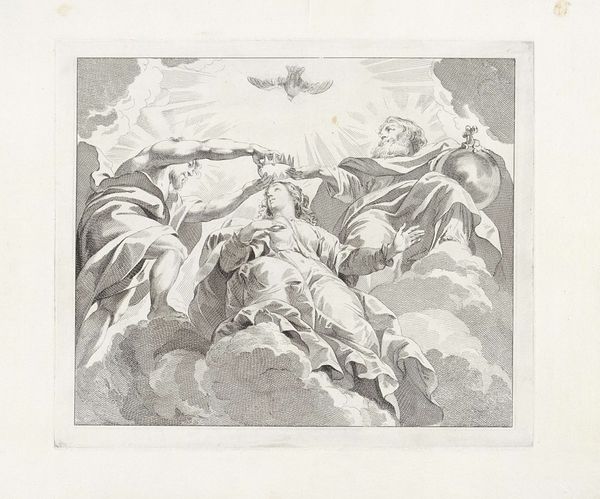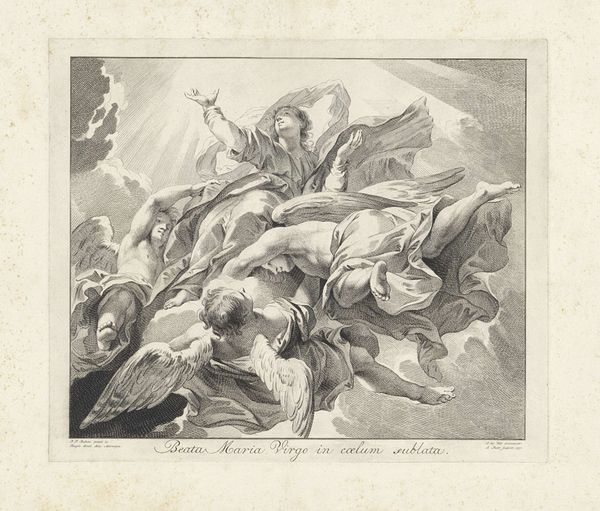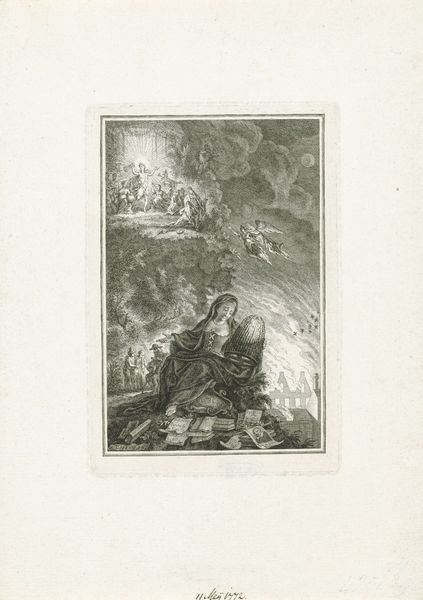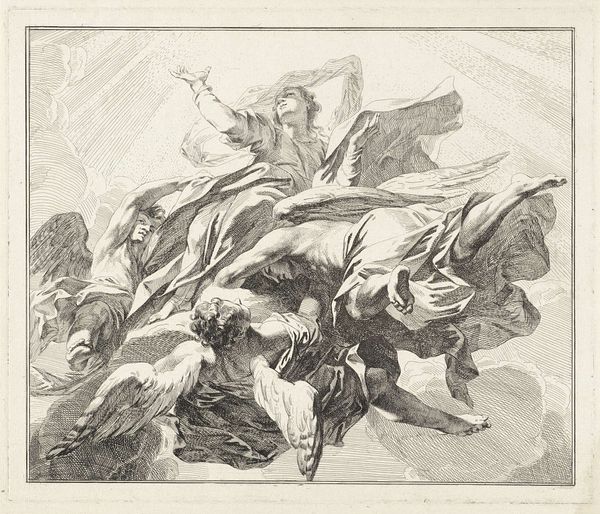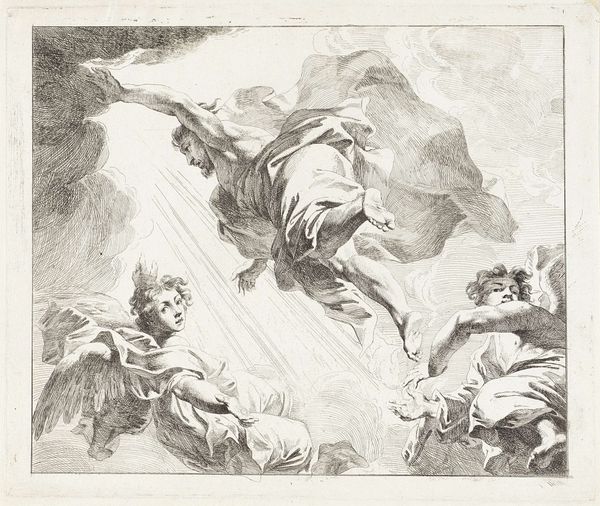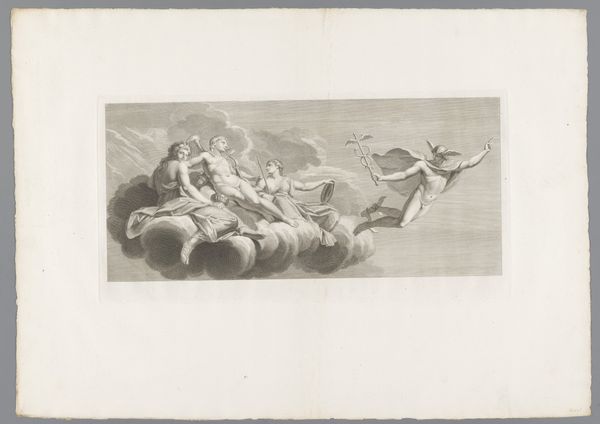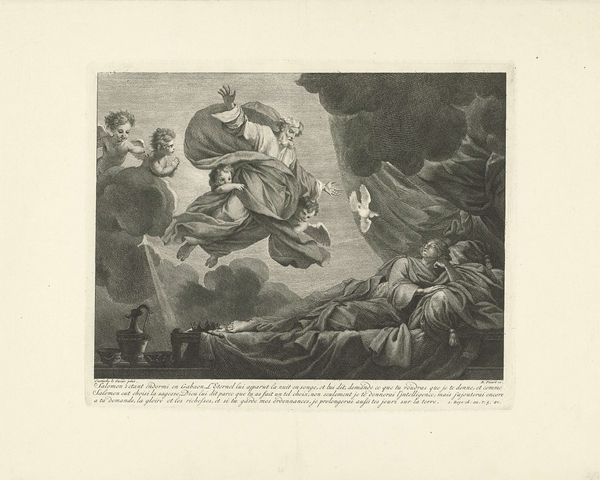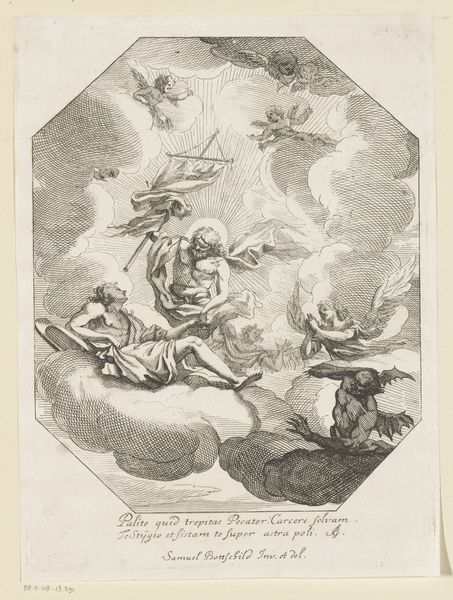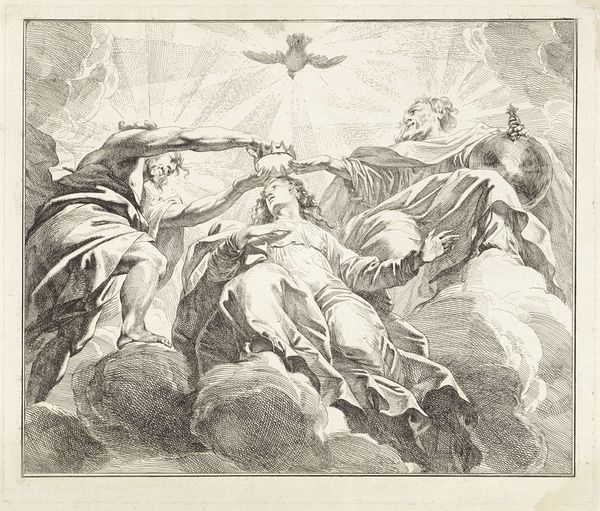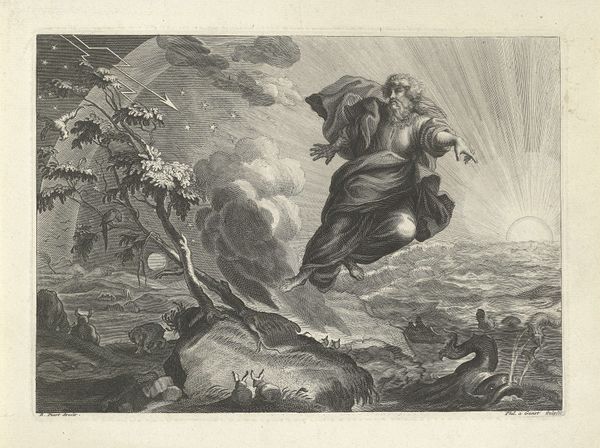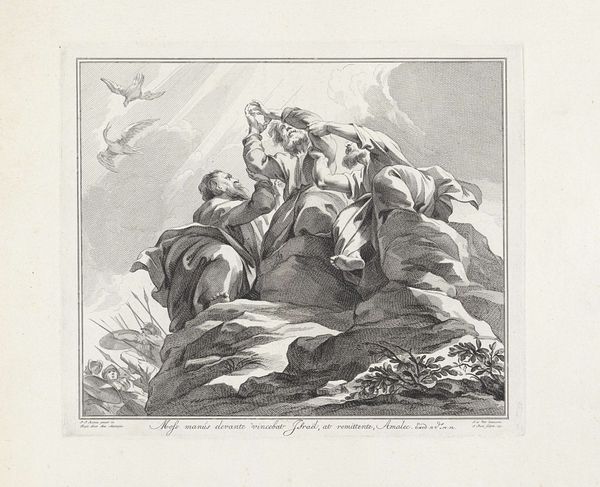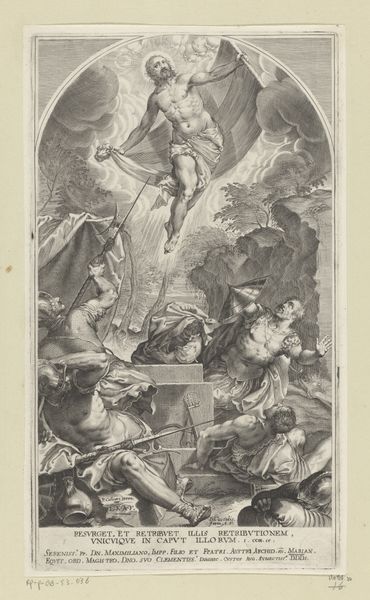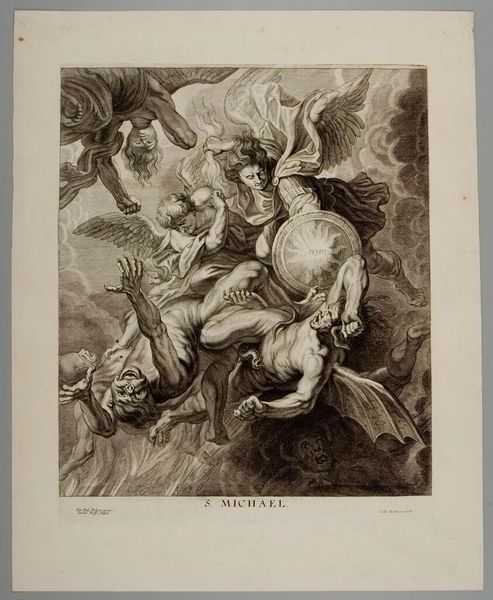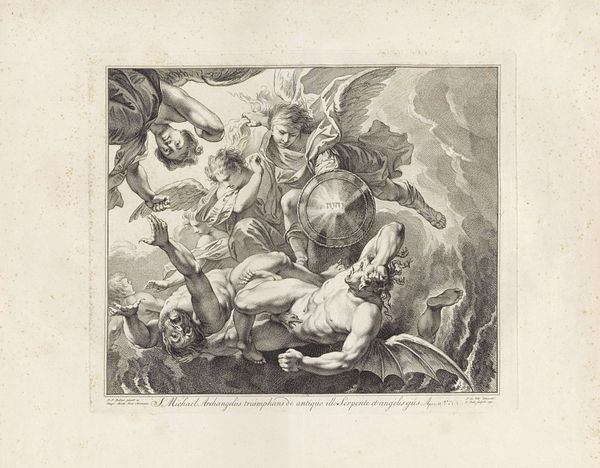
print, engraving
#
allegory
#
baroque
# print
#
old engraving style
#
figuration
#
history-painting
#
engraving
Dimensions: height 336 mm, width 397 mm
Copyright: Rijks Museum: Open Domain
Editor: This engraving, "Hemelvaart," or "Ascension," created in 1748 by Jan Punt and currently at the Rijksmuseum, features the ascending figure of Jesus surrounded by angels. The monochrome palette lends it a solemn air. What cultural and historical context shapes your interpretation of this print? Curator: The Ascension as a subject was central to asserting religious doctrine in the 18th century. Think about the power structures: religious institutions wielded significant influence, and art like this, disseminated through prints, reinforced that influence, literally elevating spiritual authority. The Baroque style, with its drama and emotional appeal, also served a purpose, engaging viewers and promoting piety. Editor: That makes sense. It's interesting to consider how art was a tool for these institutions. I had primarily focused on the artistic merit and emotion, how does that intersect with the politics of imagery at the time? Curator: It's a useful contrast! The emotionality inherent in the work also functions politically, directing public sentiment. What appears devotional might also operate as subtle social conditioning. Consider how many could engage with art on these themes versus directly understanding religious or political lectures. Editor: So, art could bypass the more intellectual parts of the message and deliver an emotive experience for faith and power? Did such artistic and political motivations shift over time? Curator: Absolutely! Examining the shift from overtly religious subjects to secular narratives allows a comparison on which themes were considered important by different ruling or cultural influences, even if the artistic style itself didn’t drastically change. Considering an artist’s public persona is crucial to this. Editor: This reframes the image for me; it goes beyond personal faith. I understand that it provides unique insight into religious and cultural values of the time. Thank you! Curator: My pleasure, it is important to view the work as a cultural artifact as much as art.
Comments
No comments
Be the first to comment and join the conversation on the ultimate creative platform.
